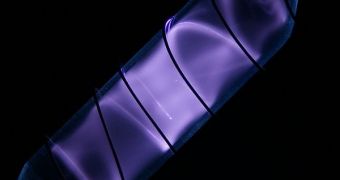Since superconducting materials were first discovered, physicists have attempted to instill this amazing property into hydrogen, the most common chemical element in the Universe. Such a breakthrough would pave the way for a massive technological boom, but this has still to be achieved. The obstacle is that turning hydrogen metallic, and then superconducting theoretically requires temperatures and pressures the likes of which are impossible with today's technology. But recently, researchers at the Carnegie Institution for Science made considerable progress in understanding how to handle hydrogen.
In charge of the CIS investigations was high-pressure researcher Ho-kwang (Dave) Mao. He and his group managed to model three hydrogen-dense metal alloys, which were also associated with certain temperature and pressure trends. Discovering these associations can considerably boost our understanding of how superconducting hydrogen can be achieved. Details of the new work appear in the January 25 early online issue of the respected journal Proceedings of the National Academy of Sciences (PNAS).
One of the characteristics that most materials turned superconducting share is the fact that they all gain their ability when cooled at extremely low temperatures. This naturally means that they cannot be used for practical, widespread applications. Chemistry can be used to bring the temperature threshold where the transformation occurs a bit higher, but not by much.
The CIS team was able to determine that modifying the pressure at which the materials were analyzed also helped with them becoming superconductors. The compounds scandium trihydride (ScH3), yttrium trihydride (YH3) and lanthanum trihydride (LaH3), all of which are lattice structures featuring metals bound to an abundance of hydrogen atoms, were found to be the most promising.
“We found that superconductivity set in at pressures between roughly 100,000 to 200,000 times atmospheric pressure at sea level (10 to 20 GPa), which is an order of magnitude lower than the pressures for related compounds that bind with four hydrogens instead of three,” Mao, who works at the CIS Geophysical Laboratory, says. “The fact that the models predicted distinctive trends in the behavior for these three related compounds at similar temperatures and pressures is very exciting for the field,” the team leader adds.
“Previous to this study, the focus has been on compounds with four hydrogens. The fact that superconductivity is induced at lower pressures in the trihydrides makes them potentially more promising materials with which to work. The temperature and pressures ranges are easily attainable in the lab and we hope to see a flurry of experiments to bear out these results,” he concludes.

 14 DAY TRIAL //
14 DAY TRIAL //